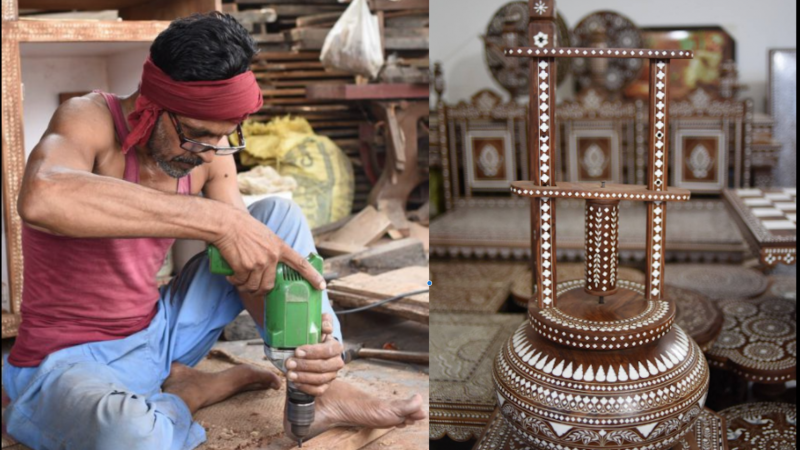The products have become expensive for the locals
The decorative wood carving and inlay art of Hoshiarpur in the Doaba region of the Indian state of Punjab has been world-renowned for centuries. However, a 1989 ban on the use of ivory coupled with environmental protections on rare wood as well as the introduction of complicated bureaucratic export practices has dramatically changed the profession. As wood carving becomes less lucrative, the craft is beginning to die out, leaving many artisans without a viable way forward.
Hoshiarpur is located in the foothills of the Himalayas and has been home to the art of wood inlay for a few centuries.
Wood Inlay of Hoshiarpur, Punjab is a decorative technique of inserting pieces of diffrent material such as bone, shell & wood in the base wooden object to form patterns.The motifs are Persian origin that can be found in the furniture & decorative items of Punjab.#CraftsOfIndia pic.twitter.com/bdkAYJ6GLM
— OdishaCraftsMuseum-Kala Bhoomi (@kalabhoomibbsr) December 19, 2019
Antique Hoshiarpur ivory inlaid products are sought out in auction houses not only in India but also abroad. After the trade of ivory was banned, artisans turned to bone, metal and acrylic which can be seen in modern iterations of the craft.
Both then and now, craftsmen prefer the high-quality wood of the Shisham tree (North Indian Rosewood) which is considered to be durable and resistant to warping.
However, after the growing Chinese demand for rosewood led to complaints of a massive decline in Latin American forests, Shisham wood was put on a list of restricted trade items in 2017. This shortage of wood has boosted the cost of the wood inlay products leading to a drop in local demand and a greater reliance on exportation.
At the same time, the Indian government created its own international compliance certificate called Vriksh, which certifies that the wood used in handicrafts is legally and responsibly sourced. However, obtaining the certificate has created another layer of bureaucracy which is giving rise to inflated prices by middlemen trading in wood. This coupled with an increase in government taxes is leading to the progressive decline of artisans in the region.
The Hoshiarpur government website puts the number of practising artisans at 100-150 and notes that the scarcity of Shisham wood is threatening the survival of the trade.
Global Voices’ partner, Kirrt, is an online gallery where the stories of the artisans of Punjab region and their work and lives are documented. In 2018, the Kirrt featured Rajesh, a woodcarver from Hoshiarpur, who described how the profession has changed over the years:
All the craftsmen, who knew the art of carving patterns in wood and shading them, has passed away. I’m one of the last two artists left in the business. Kapurthala is known for its unique furniture with ivory inlay. But when the government banned the ivory, we started using acrylic sheets to maintain the white colour. [..]
In 1911, my grandfather went to England as part of a team to do wooden work in English homes. We still possess the certificate he got back then. I was 10 when I held the shading pencils for the first time. [,,] I never excelled at school. My family decided to take me off the school and teach me the family profession.
He describes that it is a low paid profession:
But even after all this hard work, I didn’t achieve much. I’ve never been able to save a cent from this job. My daily wage is just 300-400 (US$ 4-6) Rs. which is barely enough to sustain everyday life.
Rajesh talks about the challenges many artists are facing:
By complaining so much I am not blaming the shopkeeper who has hired me, his position isn’t any better. Furniture worth lakhs is lying in the store waiting for customers. Our products don’t have local customers, they are expensive for the locals. Most of the sale happened overseas but now the government has imposed so much tax on exporting and you have to submit (a lot of) paperwork for all the material used in a product.



Post a Comment